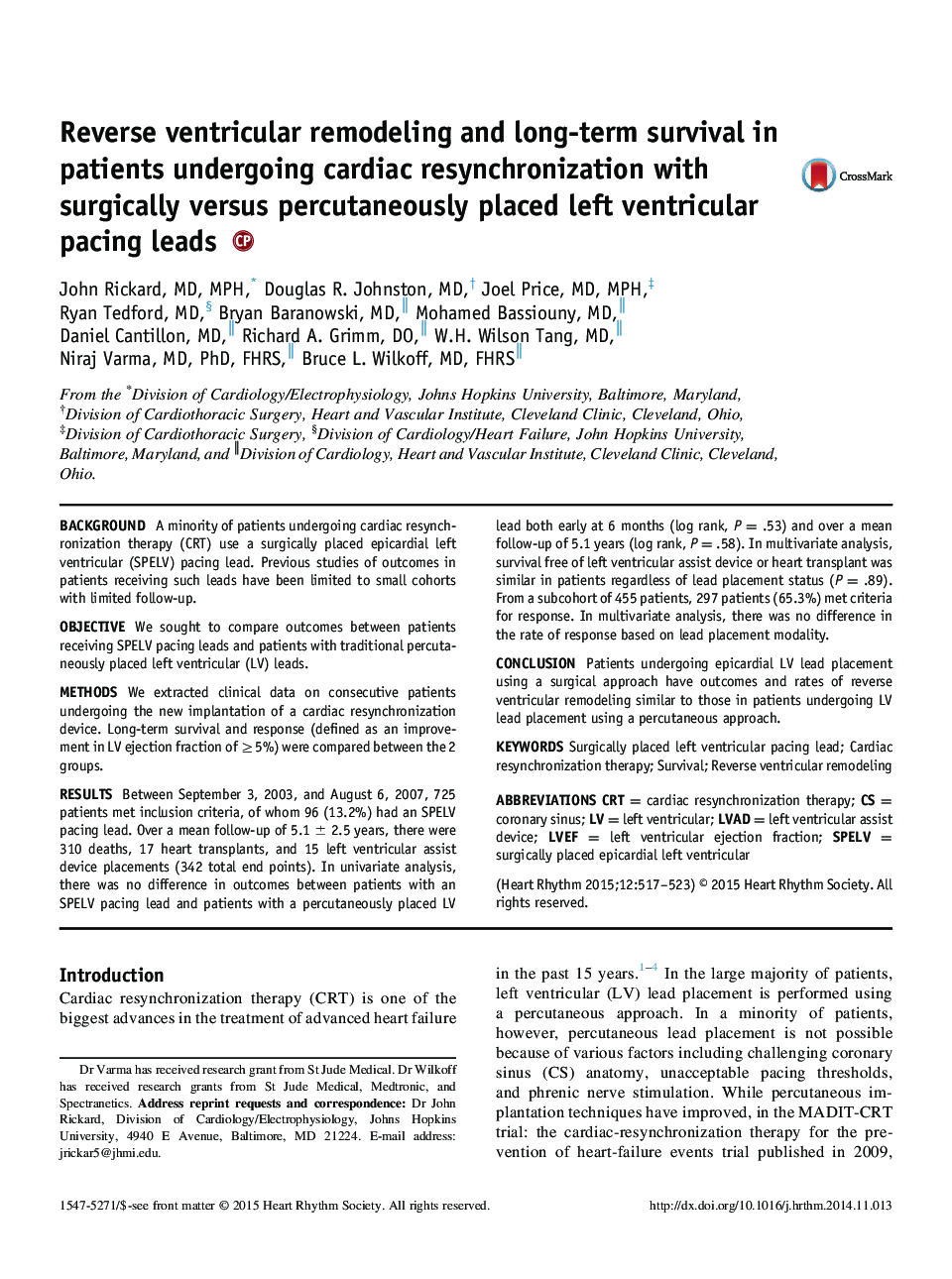| کد مقاله | کد نشریه | سال انتشار | مقاله انگلیسی | نسخه تمام متن |
|---|---|---|---|---|
| 2921874 | 1175808 | 2015 | 7 صفحه PDF | دانلود رایگان |

BackgroundA minority of patients undergoing cardiac resynchronization therapy (CRT) use a surgically placed epicardial left ventricular (SPELV) pacing lead. Previous studies of outcomes in patients receiving such leads have been limited to small cohorts with limited follow-up.ObjectiveWe sought to compare outcomes between patients receiving SPELV pacing leads and patients with traditional percutaneously placed left ventricular (LV) leads.MethodsWe extracted clinical data on consecutive patients undergoing the new implantation of a cardiac resynchronization device. Long-term survival and response (defined as an improvement in LV ejection fraction of ≥5%) were compared between the 2 groups.ResultsBetween September 3, 2003, and August 6, 2007, 725 patients met inclusion criteria, of whom 96 (13.2%) had an SPELV pacing lead. Over a mean follow-up of 5.1 ± 2.5 years, there were 310 deaths, 17 heart transplants, and 15 left ventricular assist device placements (342 total end points). In univariate analysis, there was no difference in outcomes between patients with an SPELV pacing lead and patients with a percutaneously placed LV lead both early at 6 months (log rank, P = .53) and over a mean follow-up of 5.1 years (log rank, P = .58). In multivariate analysis, survival free of left ventricular assist device or heart transplant was similar in patients regardless of lead placement status (P = .89). From a subcohort of 455 patients, 297 patients (65.3%) met criteria for response. In multivariate analysis, there was no difference in the rate of response based on lead placement modality.ConclusionPatients undergoing epicardial LV lead placement using a surgical approach have outcomes and rates of reverse ventricular remodeling similar to those in patients undergoing LV lead placement using a percutaneous approach.
Journal: Heart Rhythm - Volume 12, Issue 3, March 2015, Pages 517–523